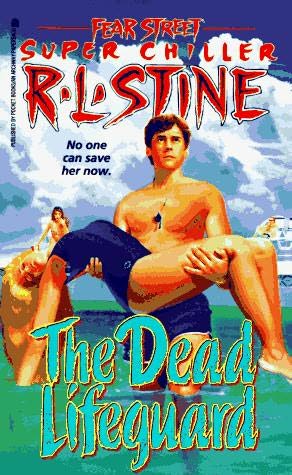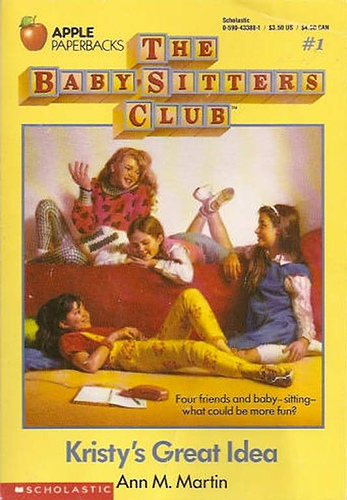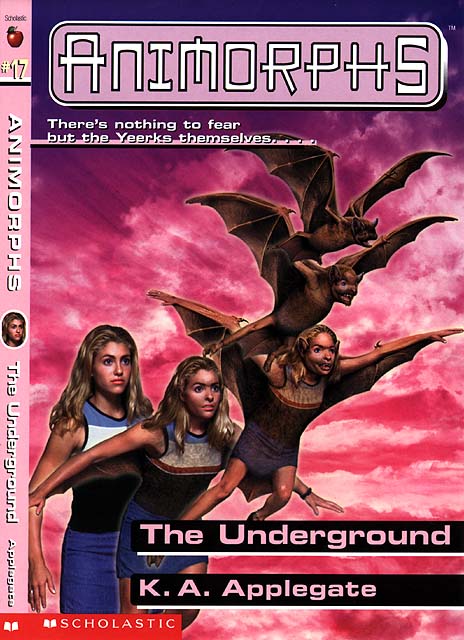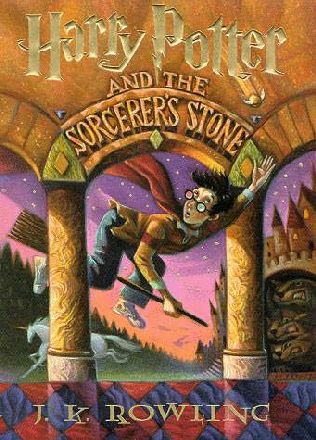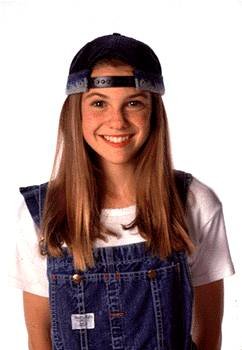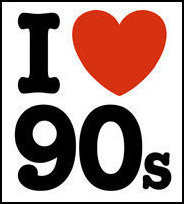 All of us have that movie for which we know every line of dialogue word-for-word. The movie that makes us abrasively irritating to friends and neighbors who just want to watch the damn movie and less-than-kindly demand for us to shut up already. The movie we can watch again and again without becoming bored, reveling in noticing delightful little touches we may have missed in our previous 364 viewings.
All of us have that movie for which we know every line of dialogue word-for-word. The movie that makes us abrasively irritating to friends and neighbors who just want to watch the damn movie and less-than-kindly demand for us to shut up already. The movie we can watch again and again without becoming bored, reveling in noticing delightful little touches we may have missed in our previous 364 viewings.For me, Clueless is that movie.
I'll let you in on a little secret, just between us. Even though I loved this movie unconditionally from the first viewing, I will be forthcoming in my admission that I had no clue whatsoever what was going on. You might say, in fact, that I myself was clueless when it came to Clueless. Well, I might say that. You probably would spare yourself the embarrassment of making such a lame, hackneyed attempt of a joke. I, on the other hand, will shamelessly go for it.
The movie came out when I was in fourth grade, and I immediately and devoutly worshiped Cher Horowitz with ever fiber of my being. In the mid-90s, we were all about voyeurism in observing how the other half lived. Or, perhaps more accurately, how the media portrayed the wildly wealthy. Shows like Beverly Hills 90210 ruled the airwaves, with preteens and adolescents desperately coveting the undeniable coolness their privileged lifestyle commanded.
How can you not smile at that delivery? In the debate scene, Alicia Silverstone unintentionally pronounced Haitians as Haiti-ans, but it was so perfect for the role of Cher that no one bothered to correct her. Really, could she have been a more perfect casting choice?
That trailer is filled with some seriously credible 90s nostalgic goodness. That scene at the end in gym class, where Amber claims to be excused because her plastic surgeon doesn't want her doing anything where balls fly at her nose? And Dionne says, "There goes your social life"? That line alone took me about 5 years until I had my "ohhhhhh" moment of facepalming realization and retrospective blushing that I'd watched the move so many times with my parents.
Amy Heckerling, the teen-genre genius behind 80s classic Fast Times at Ridgemount High, took a smarter route to exposing and humanizing the teenage children of the rich and the famous. Clueless's dialogue may have sounded vapid and substance free, but beneath the veneer of superficiality and teenage drama lay a truly smart, well-conceived film. Heckerling loosely based the screenplay on Jane Austen's Emma, updating both the setting and characters to star the gum-snapping, credit-card wielding teens of Beverly Hills.
Like her Austen counterpart, Cher is utterly self-absorbed and spoiled but with generally good intentions to her scheming. She is undeniably likable as a character. She's sweet, she's funny, and she singlehandedly managed to bring knee-high socks back into vogue. What's not to like?

The film opens with The Muff's song "Kids in America" blaring, as well-groomed attractive teenagers cruise carefreely down the streets of Beverly Hills, go shopping, party, and frolic by a waterfall-type pool that would make the Playboy Mansion's grotto blush.
Cher is quick to cut the moment, though. Her voice-over muses, "So okay, you're probably thinking, is this, like a Noxema commercial, or what? But seriously, I actually have a way normal life for a teenage girl. I mean I get up, I brush my teeth, and I pick out my school clothes." For Cher, however, picking out her school clothes entails using an enviable and no doubt advanced for its time wardrobe matching computer program and the best remote controlled scrolling closet this side of Girls Just Wanna Have Fun.
In a seriously condensed period of time, we learn a lot about Cher Horowitz and her lavish lifestyle. We meet her best friend Dionne, to whom she relates because a) they both know what it's like to have people be jealous of them and b) they were both named for singing superstars of the past who now do late-night infomercials. At school, we get to see a veritable range of 90s social groups, though of course grungy flannel is a popular theme. Cher learns she got a C in debate, dragging down her academic average. We also meet Josh, the ever-hunky Paul Rudd as Cher's ex-step brother and initial pain-in-the-ass granola-munching housemate.
Cher and her gang have a fabulous way of coining their entire own system of teen-centric terminology. Indeed, after the movie's sleeper hit status was confirmed, you could hardly enter the hallowed halls of any high school without hearing at least an occasional "Whatever!" or "As if!" Alicia Silverstone nails the doe-eyed tongue-in-cheek delivery of her airhead lines. She plays the part to perfection, letting us as the audience know that no, she's not really an airhead, she just plays one in high school. In actuality, Cher's no dummy. She manages to successfully trail in her father's litigator (the scariest kind of lawyer) footsteps by renegotiating most of her undesirable grades. Talk about results.
Dionne and Cher are well-meaning meddlers, as we see them trying to fix up two lonely single teachers at their school early in the movie. They also come upon an ugly duckling of a fish-out-of-water new student (sorry, I ran out of pond creature idioms) Tai, whose less-than-stellar appearance prompts them to do a major overhauling makeover to secure Tai's social standing at school.
Tai initially is warm to the form of slacker skateboarder Travis, but Cher vetoes that route as she's certain that if Tai starts dating the social climbing cretin Elton she'll no doubt claim a place in the A-crowd. This plan, however, goes awry when Elton expresses his feelings for Cher, to which she responds by storming out of his car in the middle of God knows where. She not only gets robbed, but is forced to lay on the ground in an Alaia for heaven's sake. An Alaia! I can't even fathom.*
 I have distinct memories of seriously coveting that outfit of Tai's to biblical proportions. Now, well, not so much.
I have distinct memories of seriously coveting that outfit of Tai's to biblical proportions. Now, well, not so much.Cher, meanwhile, has fallen for new student Christian in a big way. She sends herself chocolate and flowers and wears revealing clothing in an attempt to win his affection. Her efforts, unfortunately, seem to be for naught as she's completely oblivious to the otherwise obvious fact that Christian is gay. If that weren't enough, Tai's supposedly traumatizing near-death experience at the mall suddenly makes her the toast of the school's social scene, leaving Cher to contemplate if she's perhaps created a well-coiffed monster. On top of it all, Cher also fails her driving test in the one moment of her life she can't seem to talk or charm her way out of.
In an effort to clear her head, she heads out shopping and comes to the Celine Dion and lit-fountain punctuated moment of realization that she is actually in love with her step-brother Josh. Okay, ex-step brother, but still. I mean, yeah, they're not blood related, but their parents were once matrimonially bound. It's a bit on the skeevy side.
It gets a little awkward around home as she suddenly is unsure of how to act in his once-maligned presence. Cher throws herself into the goal of becoming a better person in her attempt to distract herself from her crumbling personal life. It's all really kind of sweet in a completely out-of-touch with reality way. Like donating your expensive skis to a disaster relief aid collection? Probably not at the top of their list. Oh well. It's the thought that counts.
All's well that ends well, luckily, as Cher and Josh eventually confess their mutual if awkwardly familial feelings toward one another, and the two lonelyhearts teachers from the initial set-up are wed in a sweet concluding ceremony. Tai and Travis finally get together, Dionne makes at least temporary peace with her boyfriend Murray, and Josh and Cher are finally together after a long and painfully tense period of anticipation.

Alright, so maybe it's not real life. But that's the real fun of it. Clueless was more than just a modern reuptake on a classic. It was a film that briefly defined a fledgling generation teetering on the brink of a shift from grunge flannel and heroin chic to mainstream preppy teenybopperyism.** It was better than real life. The people were better looking and better attired, the setting was covetable, and the money was free flowing. It was a well-grounded fantasy that spurned a thousand Cher wannabes.
And of course, I just can't give you a full in-depth post on Clueless without posting (well, reposting) one of my personal faves: a Golden Girls Clueless spoof from the 1996 MTV Video Awards. I just can't in good conscience let you off the hook without enjoying some good old fashioned satire with jokes at the expense of some very comically talented elderly ladies. Enjoy responsibly.
*For those of you who don't know, she's like a totally important designer
**This is not a word. Just deal with it.










